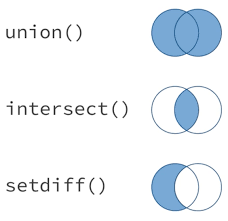
Cliff
-
Posts
67 -
Joined
-
Last visited
Content Type
Forums
Events
Store
Video Gallery
Posts posted by Cliff
-
-
Ok, got it. Clear strategy.
-
I own Sonuscores excellent TOC2.
It might not be as professional as VSL but it still has an excellent reputation.
 THE ORCHESTRA COMPLETE 2 - Orchestra VST Plug-In - Sonuscore
SONUSCORE.COMIn a revolutionary all-in-one orchestra vst, the sound of a symphonic orchestra is at your fingertips. Immediately playable. Surprisingly simple.
THE ORCHESTRA COMPLETE 2 - Orchestra VST Plug-In - Sonuscore
SONUSCORE.COMIn a revolutionary all-in-one orchestra vst, the sound of a symphonic orchestra is at your fingertips. Immediately playable. Surprisingly simple.Has somebody already successfully connected it to OM via sound set and willing to share it?
-
Thanks @JulioHerrlein for hints. The number of functions is so huge
 So much to learn and apply
So much to learn and apply 
RegardsCliff
-
Say we have as base material 2 list sequences a and b in omn or other musical OM forms (i.e. pitch series), which are generated by some algorithm.
There will be cases where you want to calculate on sets of this material.
Is there a OM function which helps to calculate set operations for both?
Foregive me if I missed something in the excellent docu.
If not, consider to implement the 3 elementary types of set operations:
- union: the set with holds all elements of a and b
- intersect: the set which holds the elements found in a and b, but excludes those which only occur in a resp. b.
- setdiff: the set which holds all elements in a which are not elements in b
Needless to say that set functions will discard duplicates.
I am sure there are LISP functions for this, but they probably won't generalize to OM related data structure?
Regards
Cliff
-
I understand from initial testing, that currently rnd-sample works what statisticians call sampling with replacement.
Is this correct (please forgive me if I missed something in the doc) ?
I guess the current behavior covers most musical cases, as long as you want to get a sample which holds some mix of elements in SEQUENCE. There might be cases where you want a slightly different behaviour especially if N is close to length of SEQUENCE.
If I am correct, I suggest to implement a parameter :replace (by default t (true) for backward compatibility) to define a behavior where the elements from SEQUENCE are not replaced.
For :replace set to nil:
If N exceeds length of SEQUENCE then an error is raised.
If N equals the length of SEQUENCE then simply all elements are returned.
Regards
Cliff
-
While complaining about the state/progress on ARM M1 upgrade, Heres a honest Happy Customer statement on OM language:
Everytime I learn a new function, I grow in understanding that OM is super powerful while still the language and syntax (once getting used to parathesis) is simple enough to not get distracted. More and more I feel to understand the intention why certain functions have been designed and how to apply them. A huge support is the good website and inline docu (probably the best I have ever seen).
It dawns me that people who created the OM language and drive its evolution so long do really understand whats necessary for algorithmic composition.
I feel privileged to participate to have daily insights while learning all these music-related concepts and enjoy it a lot.
In my dayjob I am a Data-Scientist so maybe I will contribute some day with ideas not covered yet, not shure if they are musical as I am just hobbyist.
Excellent, Thanks a lot.
Keep the good work.
Regards
Cliff
- opmo and Stephane Boussuge
-
 1
1
-
 1
1
-
Thank you @JulioHerrlein for your suggestions. Could not solve it yet, I seem to struggle with Cubase.
-
Simple question from a non-professional hobby musician (using OM to learn music theory):
I know that composing a melody over chord progression using mostly chord and partly appropriate scale pitches often sounds pleasing (sorry again I am a starter and my ears are not yet used to atonal music).
I want to learn approaches to develop this in OM.
Currently as starter I am fighting a bit with the steep learning curve to use OM.
Therefore, my question: are there tutorials which could help me to understand which approaches exist in OM to accomplish a chord-first / melody-second approach?
Thx
-
Simple question from a non-professional hobby musician (using OM to learn music theory):
Does Opusmodus offer a circle of fifth plot, maybe connected with a chord progression, which would help learning tonal music basics.
-
-
I have serious issues in recording the OM generated MIDI via IAC port to Cubase.
I can reach the destination and clearly monitor the signal but Cubase records these signals not as seperate notes but rather collapses them together from t=0 to a meaningless giant chord. I already tried a lot of switches in Cubase settings and channel configs all in vain. Same IAC works when recorded on Bitwig.
Problem on MacOSMonterey with Cubase Pro 11 and 12.Does someone in forum operate this configuration successfully?
Had anybody experienced same issue and solved it?
-
Thx, whats the timeline ?
-
Hi, I have a Mac Mini with M1 Silicon Chip running Mac OS Monterey.
Is Opusmodus compatible?
Thx for short notice.


Code for "Stéphane Boussuge : Motivic cell technique explorations with Opusmodus"
in Made In Opusmodus
Posted
@Stephane Boussuge: If I am not mistaken, you mentioned in your convention talk (First Opusmodus Convention 2021 - Day 2: Stéphane Boussuge : Motivic cell technique explorations with Opusmodus) that the code will become integrated into next OM version.
Can you give a poster where it is. I searched for motivic / cell but maybe my search strategy is wrong.
I am especially interested in the last section, in you demoed a piece fully made by random material and variation techniques.
Thx
Cliff